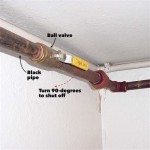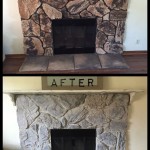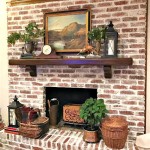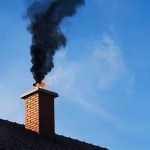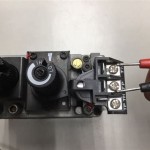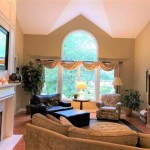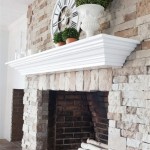Two-Sided Ventless Gas Fireplaces: A Comprehensive Overview
Two-sided ventless gas fireplaces offer a unique and aesthetically pleasing heating solution for modern homes. Unlike traditional fireplaces that require a chimney or venting system, these units are designed to operate without external venting, making them a versatile option for various architectural layouts. This article delves into the mechanics, benefits, considerations, and safety aspects of two-sided ventless gas fireplaces, providing a detailed understanding of their functionality and application.
The core principle behind ventless gas fireplaces lies in their efficient combustion process. They are engineered to burn fuel with high efficiency, minimizing the production of harmful byproducts such as carbon monoxide. Internal oxygen depletion sensors (ODS) are integral to their safe operation. These sensors continuously monitor the oxygen levels in the room. If the oxygen level drops below a predetermined threshold, the ODS automatically shuts off the gas supply, preventing the buildup of carbon monoxide. This safety mechanism is paramount to ensuring the well-being of occupants.
Two-sided models, also referred to as see-through fireplaces, are designed to be visible from two adjacent rooms or areas. This feature provides a visually appealing focal point, connecting spaces and creating a sense of openness. They can serve as a stylish divider between living rooms, dining areas, or even bedrooms and bathrooms, enhancing the ambiance of the home.
Understanding the Mechanics of Ventless Gas Fireplaces
The functionality of a ventless gas fireplace hinges on a combination of factors, primarily involving the fuel source, combustion process, and safety features. These fireplaces typically utilize either natural gas or liquid propane (LP) as their fuel source. The choice between these fuels depends on the availability and preference of the homeowner, as well as the compatibility with the specific fireplace model.
Upon ignition, the gas is mixed with air and burned within a ceramic or metal burner. These burners are carefully designed to maximize combustion efficiency. The resulting heat is then radiated into the surrounding room. The efficiency of the combustion process is critical, as it directly impacts the levels of byproducts released into the air. Modern ventless gas fireplaces are required to meet stringent safety standards regarding emissions, ensuring they operate cleanly and safely.
The oxygen depletion sensor (ODS) is a crucial safety component. It continuously monitors the oxygen levels in the room. Insufficient oxygen levels can indicate incomplete combustion, leading to the production of carbon monoxide. If the ODS detects a drop in oxygen below a safe level, it automatically shuts off the gas supply, preventing the buildup of this dangerous gas. Regular maintenance and inspection of the ODS is essential to ensure its proper functioning.
In addition to the ODS, many ventless gas fireplaces incorporate other safety features such as overheat sensors and automatic shut-off mechanisms. These features provide additional layers of protection, ensuring the fireplace operates safely under various conditions. It is crucial to adhere to the manufacturer's instructions regarding installation, operation, and maintenance to maximize the safety and longevity of the unit.
Advantages of Two-Sided Ventless Gas Fireplaces
Two-sided ventless gas fireplaces offer several distinct advantages over traditional fireplaces and other heating options. Their ventless design simplifies installation, eliminates the need for costly chimney construction or modifications, and provides flexibility in placement within the home. The aesthetic appeal of a two-sided model is undeniable, enhancing the ambiance and creating a unique focal point.
The primary advantage of ventless fireplaces is the ease of installation. Unlike traditional fireplaces that require extensive venting systems, ventless models can be installed virtually anywhere in the home, provided the necessary gas line is accessible and the room meets minimum size requirements. This simplified installation process translates to lower installation costs and greater flexibility in design and placement.
The two-sided design provides a unique aesthetic benefit, allowing the fireplace to be viewed and enjoyed from two separate rooms or areas. This feature creates a sense of connection between spaces, enhances the visual flow of the home, and can serve as a stylish room divider. The flames and glowing embers create a warm and inviting atmosphere, adding to the overall ambiance of the home.
Furthermore, ventless gas fireplaces offer efficient heating. They are designed to radiate heat directly into the room, providing supplemental warmth and reducing reliance on central heating systems. This can result in energy savings, especially during milder weather when only localized heating is required. The efficiency of ventless fireplaces is typically higher than that of traditional fireplaces, as there is no heat loss through a chimney or vent.
Finally, many ventless gas fireplaces are equipped with convenient features such as remote control operation, adjustable flame settings, and programmable timers. These features provide added convenience and control over the fireplace, allowing homeowners to customize the heating experience to their preferences.
Key Considerations and Safety Precautions
While two-sided ventless gas fireplaces offer numerous benefits, it is crucial to consider certain factors and adhere to strict safety precautions to ensure their safe and efficient operation. These considerations include proper room size, ventilation requirements, installation guidelines, and regular maintenance.
One of the most important considerations is room size. Ventless gas fireplaces consume oxygen during combustion, and it is essential that the room is large enough to provide an adequate supply of oxygen for both the fireplace and the occupants. Manufacturers specify minimum room size requirements for each fireplace model, and it is crucial to adhere to these guidelines to prevent oxygen depletion and potential safety hazards.
Although they are termed "ventless," these fireplaces still require some degree of ventilation. It is recommended to open a window or door slightly during operation to provide a source of fresh air and prevent the buildup of combustion byproducts. This is particularly important in smaller rooms or in homes with airtight construction. Proper ventilation helps maintain healthy indoor air quality.
Professional installation is highly recommended to ensure the fireplace is installed correctly and safely. A qualified technician can verify the gas line is properly connected, the fireplace is level and stable, and all safety features are functioning correctly. Improper installation can lead to gas leaks, carbon monoxide poisoning, and other serious hazards.
Regular maintenance is essential to ensure the fireplace operates safely and efficiently. This includes cleaning the burner, inspecting the ODS, and checking for any signs of damage or wear. It is also important to follow the manufacturer's recommendations for routine maintenance and servicing. Proper maintenance can extend the lifespan of the fireplace and prevent potential problems.
Carbon monoxide detectors should be installed in the home, particularly near the fireplace, to provide an early warning in case of a malfunction or incomplete combustion. These detectors should be tested regularly to ensure they are functioning properly. Carbon monoxide is a colorless and odorless gas that can be deadly, so it is crucial to have a reliable detection system in place.
Finally, it is essential to educate all occupants of the home about the safe operation of the fireplace and the potential hazards associated with improper use. This includes understanding the purpose of the ODS, recognizing the symptoms of carbon monoxide poisoning, and knowing what to do in case of an emergency.
By carefully considering these factors and adhering to all safety precautions, homeowners can enjoy the warmth and ambiance of a two-sided ventless gas fireplace while minimizing the risks associated with combustion appliances.

Monessen Designer Ventfree See Thru Fireplace With Multi Side Log Set Fine S Gas

Double Sided Gas Logs Vented And Ventless Sets

Breckenridge See Through Vent Free Firebox Fine S Gas

Buy Regency Panorama P121 Gas Fireplace See Thru Two Sided Or In

Vantage Hearth Vent Free Gas See Thru Firebox

Double Sided See Through Gas Fireplaces North Country Fire

Natural Gas Fireplace G Series European Home Contemporary Open Hearth Double Sided

Napoleon Hd81 Gas Fireplace See Thru Direct Vent

1200 Double Sided Verto Built In Vent Free Gas Fireplace Lava Fires

New York 2 Sided Fireplace I Hearthcabinet Ventless Fireplaces
Related Posts

